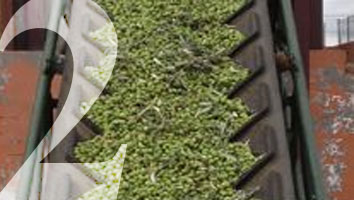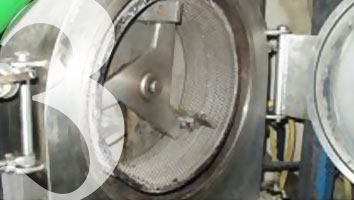

The process of obtaining the oil, known as milling , consists of several phases that begin with the harvesting of the olives and end in the final packaging of the product.
The quality of the oil obtained is the most important , and it is what the final consumer perceives. The production process has to focus on the quality of the final product. At Aceite de Oliva Cortijo El Canal, we carefully control the production processes from harvesting to packaging, so we can apply quality control to obtain the best Extra Virgin Olive Oil.
To obtain a quality Extra Virgin Olive Oil, it is necessary to use exclusively healthy olives., that they are at their optimum point of maturation, recently harvested, and to be very demanding with the state of the materials that are going to be in contact, with the comprehensive cleaning of the facilities and applying the appropriate working conditions in each of the processes involved in the production. There are no quality oils without quality olives.
2
RECEPTION, CLEANING AND WEIGHING
The transport of the olives from the ground and from the tree is done separately, in clean means of transport; and it is received in the oil mill in differentiated hoppers.
To obtain a quality oil, the olive is processed within 12 hours of its collection .
The first step we take is to classify the received fruit. This management is usually done according to the harvest plot, the degree of maturation, the health status. Then they undergo a process of cleaning, washing, weighing.

4
SMOOTHIE
In our oil mill we use a cold system, with 3-body horizontal mixers, built in stainless steel, with a paddle system, and a heating system, using hot water, which circulates through a jacket that surrounds each body of the mixer.
The duration of the shake time is between 90 and 120 minutes.
To obtain quality oils, the temperature of the batter must not exceed 25-26 ºC.

6
DECANTING
Although the liquid matter is outlined, it still contains a small amount of vegetation water that, obviously, must be eliminated. This new separation can be done by decantation, centrifugation or through a mixed system that combines both procedures.
It is the so-called liquid phase, where in a third machine, by means of only physical procedures, the olive oil and the remaining vegetation water are separated.

8
PACKING
Our Extra Virgin Olive Oil is an unfiltered oil, that is to say, it is unfiltered, so solid deposits may appear at the bottom of the bottle.
We pack the oil manually, and always on request, to keep it in the tanks for as long as possible and to keep all its healthy properties and organoleptic qualities intact.





